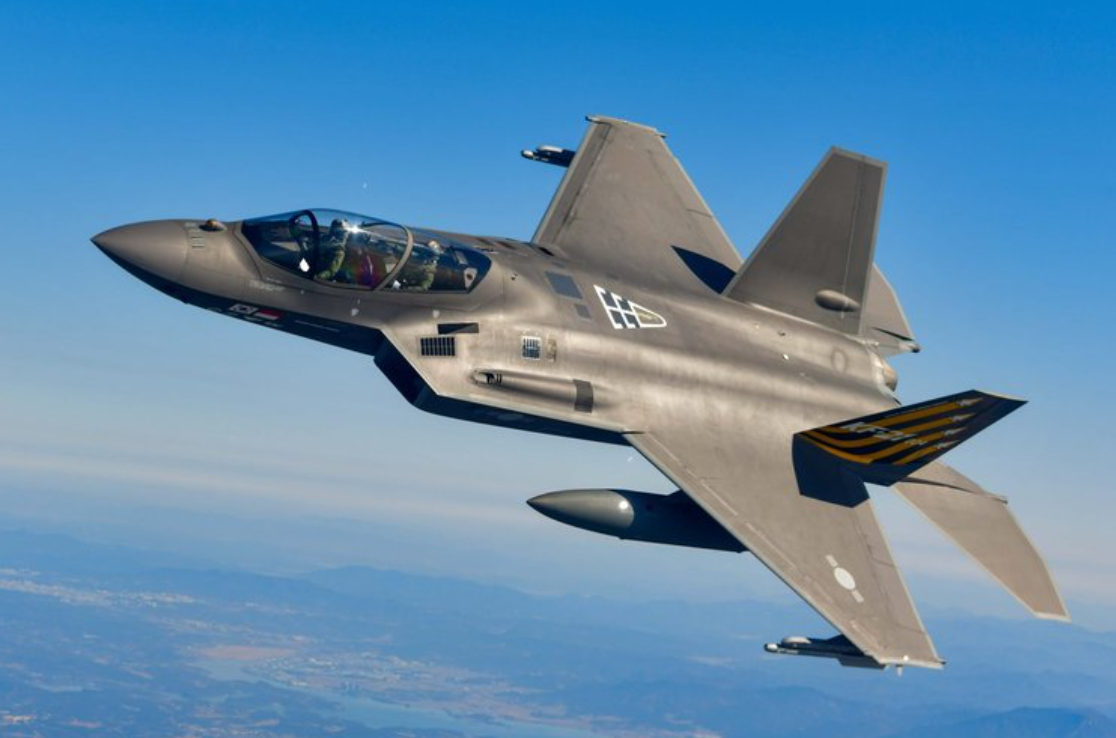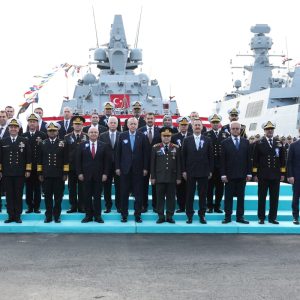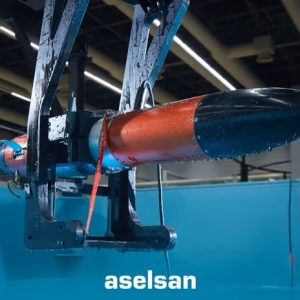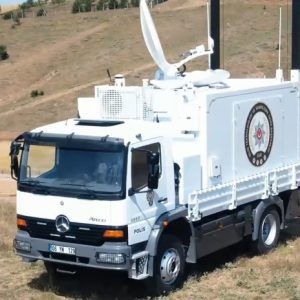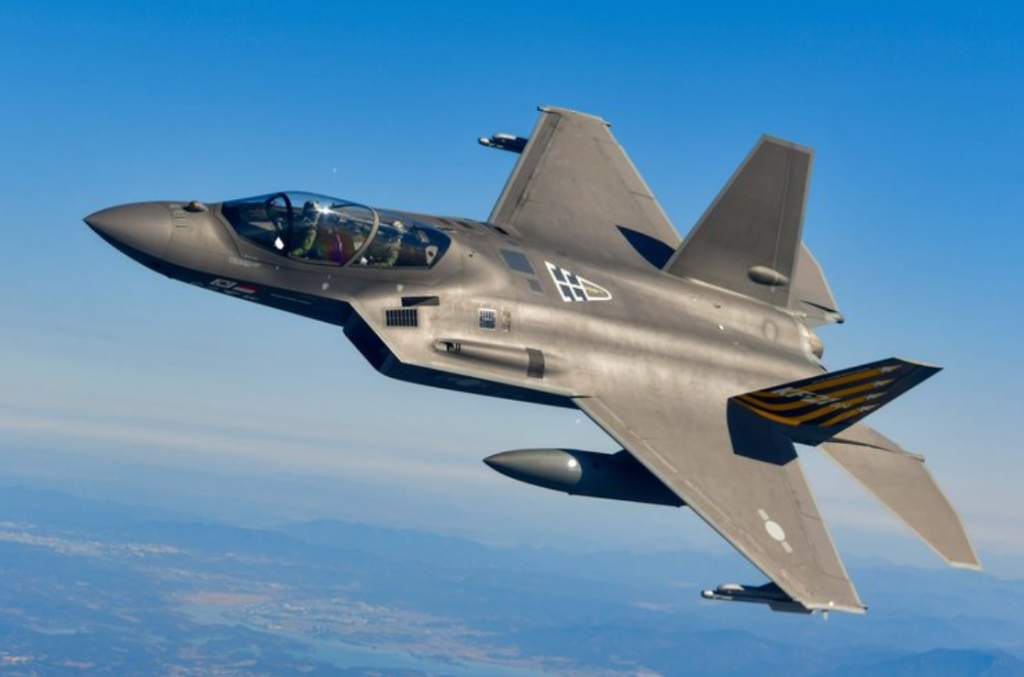
Manned‑Unmanned Teaming (MUM‑T) is rapidly becoming the decisive market differentiator for fighter aircraft, allowing 4.5–5th generation platforms to remain operationally relevant while sixth‑generation programs mature. At DSEI 2025 and across recent tenders, air forces increasingly evaluate not just jets but full ecosystems—crewed fighters orchestrating loyal wingmen, UCAVs and air‑launched effects via standardized data links and autonomy stacks. This analysis explains why MUM‑T is resetting procurement criteria, how Europe and the Indo‑Pacific are structuring programs, and what it means for upgrade roadmaps this decade. [1]
Why MUM‑T is becoming the baseline requirement
Originally popularized in U.S. doctrine more than a decade ago, MUM‑T is defined as the synchronized employment of soldiers, manned and unmanned air/ground vehicles, robotics and sensors to increase situational understanding, lethality and survivability—a definition still echoed in official U.S. Army publications. [2] Beyond definitions, NATO’s STANAG‑4586 Levels of Interoperability (LOI) turned the idea into testable requirements for control authority and data exchange between crewed platforms and unmanned systems. In competitions, demonstrating LOI progress—and how it maps to mission sets—now influences scoring as much as raw kinematics. [3,4]
Key Facts
- MUM‑T shifts fighter procurements from platform‑centric to ecosystem‑centric evaluations (fighter + loyal wingman/UCAV + data links).
- USAF’s Collaborative Combat Aircraft (CCA) program is now flight‑testing YFQ‑42A and fielding multiple designations. [5,6]
- European paths (Rafale F5, Typhoon, Gripen) target operational MUM‑T in the 2030s; interim demonstrations use Link‑16 to bridge crewed‑uncrewed control. [1,7]
- Two‑tiered MUM‑T constructs (fighter → loyal wingman → ALE/AAP) are emerging around South Korea’s KF‑21. [9]
Europe’s trajectory: programs before platforms
Rafale F5 and a companion UCAV
France’s Rafale F5 standard anchors a national roadmap that pairs the fighter with a stealthy UCAV derived from nEUROn, with a procurement program valued by industry analysts near $3.96 billion. The French Navy plans a parallel carrier air wing construct in the 2040–2045 timeframe. These moves signal Europe’s transition from isolated UAV trials to fighter‑led MUM‑T packages with survivable, strike‑capable wingmen. [1]
Typhoon and Gripen: demonstrations to de‑risk LOI
BAE Systems and QinetiQ completed a 2025 demonstration coupling a Typhoon tactical display replica with the Banshee drone inside a synthetic environment, using Link‑16 as the near‑term bridge between crewed cockpits and new generations of uncrewed aircraft. For export customers, this sort of incremental LOI de‑risking is a pragmatic way to field MUM‑T without waiting for sixth‑gen networks. [7]
US momentum: CCA makes MUM‑T operational
The U.S. Air Force is converting MUM‑T from concept to force structure via the CCA program. In 2025 the service publicly designated two Mission Design Series—YFQ‑42A and YFQ‑44A—and began flight testing the former, signaling a rapid path from demonstrators to fieldable wingmen. That clarity reshapes global bids: air forces now ask whether a fighter is “CCA‑ready” in terms of datalink, human‑machine teaming, and autonomy governance. [5,6]
Two‑tiered constructs: KF‑21 and the Indo‑Pacific template
South Korea’s KF‑21 roadmap pairs each crewed jet with up to four loyal wingmen, and then attaches four air‑launched effects/adaptable aerial platforms to each wingman—creating a two‑tiered swarm under fighter supervision. For allies, the concept reframes cost and scale: affordable mass at the edge, survivable sensors and effectors, and a fighter that functions as a mission commander. [9]
Procurement implications: bundling jets with wingmen
Sales playbook: F‑15EX + Ghost Bat
At MSPO 2025, Boeing explicitly bundled the MQ‑28 Ghost Bat with the F‑15EX offer to Poland—an archetypal example of MUM‑T as a bid differentiator. Expect more offers where UCAVs, training, and LOI certifications ship alongside the fighter, rather than as post‑hoc add‑ons. [8]
Upgrades for 4.5–5th gen fleets
For operators of Typhoon, Rafale, Gripen and F‑16/‑15 fleets, MUM‑T upgrade programs offer near‑term relevance while sixth‑gen timelines stretch. The essential package mixes LOI upgrades, pilot‑vehicle interface changes (e.g., large‑area displays), autonomy gateways and EW/cyber‑hardened datalinks. Because crews must trust uncrewed teammates, training and safety cases (air‑worthiness of autonomy, rules of engagement, loss‑of‑link) become as critical as the airframe. [1]
Beyond Europe: Canada’s F‑35 ecosystem thinking
Recently released Canadian government documents indicate Ottawa is exploring combat drones to support its incoming F‑35 fleet, with early cost bands reported up to the low‑tens of billions. Regardless of the final path, the signal to industry is clear: showcase fighter compatibility with current and emergent UAV capabilities, not just C4I and EW. [10]
What this means for NATO operators and industry
For NATO air forces, MUM‑T compresses the traditional acquisition stack—airframe, sensors, weapons, datalinks—into an integrated architecture where LOI compliance and training pipelines drive availability. For industry, it tilts value toward mission engineering and integration: open interfaces, verified safety cases for autonomy, and spiral upgrades that keep crews in the loop while gradually off‑loading workload to UCAVs and ALEs.
In the 2020s, the “best fighter” isn’t a single jet—it’s the team it can launch, control and survive with. That is the essence of Manned‑Unmanned Teaming (MUM‑T).
Buyer’s checklist: making MUM‑T real
Pragmatically, acquisition teams can de‑risk MUM‑T by asking three questions: First, which LOI levels are demonstrated today and on what datalinks (Link‑16 now, with roadmaps to IP‑native waveforms)? Second, how will human‑machine teaming be trained and certified (sim‑based tactics development, safety cases, ROE)? Third, what is the spiral plan from one‑to‑few wingmen toward two‑tiered constructs with ALE/AAP, and how will EW/cyber resilience be validated against peer threats? These answers increasingly outweigh marginal differences in thrust‑to‑weight or radar range.
Internal link: For more DSEI coverage and context, see our roundup on day five here.
External primer: JAPCC’s overview of MUM‑T and NATO LOIs remains a useful baseline for planners. Read the article. [4]
References
- DSEI 2025: The fighter market shift to MUM‑T — Shephard Media (accessed 15 Sep 2025).
- U.S. Army (army.mil): “Manned‑Unmanned Teaming operations… are the synchronized employment…” (2017).
- NATO STANAG‑4586 (AEP‑84) — DLA Quicksearch listing (active standard).
- JAPCC: “Manned‑Unmanned Teaming” — LOI overview and use cases.
- USAF (af.mil): CCA designations YFQ‑42A / YFQ‑44A (Mar 2025).
- USAF (af.mil): YFQ‑42A flight testing (Aug 2025).
- BAE Systems: crewed‑uncrewed synthetic demonstration with Typhoon/Banshee using Link‑16 (2025).
- Janes: MSPO 2025 — Boeing adds Ghost Bat to F‑15EX offer to Poland (2025).
- Janes: KAI AAP two‑tiered MUM‑T concept for KF‑21/FA‑50 (2025).
- Global News (The Canadian Press): Canada considering combat drones to support F‑35 (Jul 2025).

